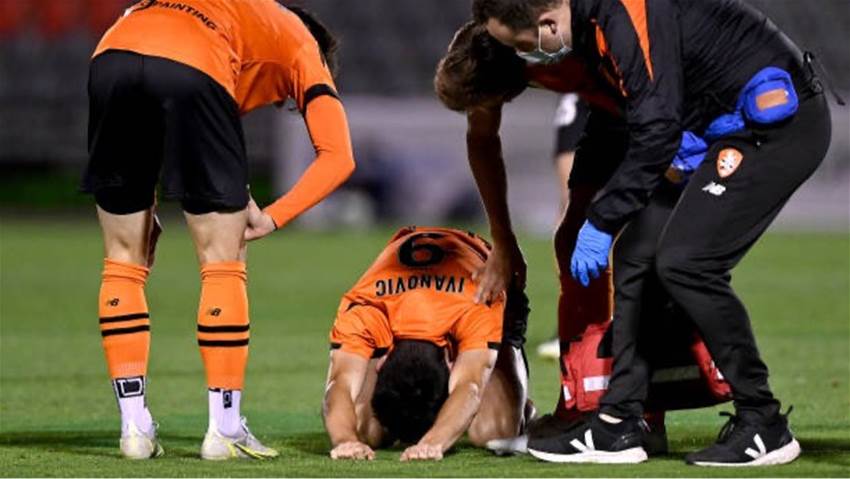The FA will be trialing concussion protocols starting with the FFA Cup after receiving International Football Association Board clearance to do so.
The issue of concussions and how to properly prioritize player welfare has increasingly become a cause of concern as more research has enlightened sports medical specialists and sports administrators as to the adverse short and long term neurological effects of head injuries.
In response to this FIFA, alongside the International Football Association Board which oversees the Laws of association football, started to trial the introduction of concussion substitutes earlier this calendar year during the FIFA Club World Cup.
After its success the Premier League, the Women's Super League, Major League Soccer, the National Women's Soccer League, Ligue 1 as well as a number of other leagues and national football associations have all trialed and included concussion substitutions as part of their league rules.
The FFA will now begin to trial concussion substitutions for the first time in Australia during the current Round of 32 of the FFA Cup, with the Brisbane Roar's game being the first match where the change took affect.
The trial will also extend to the other FFA Cup Final Rounds and both the 2021-22 A-League and W-League seasons.
Two different trials were available to the FFA, with "Protocol A" being the one chosen. Under this protocol, each team will be allowed one concussion substitute per match which is not included in the normal number of substitutes.
The substitution may occur after an on-field assessment and/or after an off-field assessment; immediately after a concussion occurs or is suspected; or at any other time when a concussion occurs or is suspected including when a player has previously been assessed and returned to play. Once a concussion substitution takes place, that player may not return to the field.
Association football is not the first sport to introduce concussion substitutions. Cricket has seen the introduction since the mid-2010s in some countries, with the International Cricket Council allowing concussion replacements in all international matches since 2019.
Rugby Union have allowed for temporary replacements during head injury assessments (HIA) with the substitution becoming permanent if the player cannot returns to play. The change originally started to be implemented in 2014.
Australia's National Rugby League currently allows an additional substitution, an eighteenth player, in the case of multiple players being ruled out due to head injuries. The change was made earlier this year.
Opponents and proponents to concussion substitutions have long existed, both in Australia and around the world.
A main argument against the introduction of the concussion substitution has been that it could be misused for the purposes of increased competitiveness by teams using it illegally as an extra substitution instead of for valid concussion concerns. This is a fear expressed by former Australia captain Mark Taylor with regards to cricket's similar change.
Suggestions have been made to remove the incentive of using the concussion substitution for nefarious purposes. Association football's world player's union FIFPro have asked that an independent doctor be present to assist the team doctor in the concussion assessment in order to remove possible bias to return to play or to illegally use the substitution.
The specification of possible bans for abusing of the concussion substitution, such as the ones that were given during the infamous "Bloodgate" scandal (where rugby union club Harlequins abused of the blood injury replacement by bringing on fake blood capsules), could also be a solution.
So far no incidences of the concussion substitution being used illegally have occurred in association football though. Even if this does arises, in the end the need to put player welfare ahead of possible bad faith changes must be prioritized.
It is the concerns about player welfare and the lack of use or misuse of concussion protocols that have been a major argument for proponents of the introduction of concussion substitutions.
Specifically, the fear that a player could be kept in a game for competitive purposes without proper concussion protocols being applied instead of being substituted out has been highlighted. Teams hesitating to substitute a concussed player if this would leave them with one less substitution or worse shorthanded has also been a cause for concern.
There have been incidences of lack of thoroughness with concussion protocols, in efforts to ensure a quick return to play. Players themselves have been known to try to convince or coerce team medical professionals in efforts to remain in a game after a head injury.
Ultimately, all of these situations expose concussed players to the possibility of significant short and long term harm.
A notable example of this occurred during the 2014 FIFA Men's World Cup final when Germany's Christoph Kramer suffered a hit to his head. Kramer was allowed to continue playing afterwards, despite displaying three signs of concussion, for fourteen minutes.
He even asked the referee after the hit if he was playing in the final of the World Cup, confused due to concussion symptoms. Ultimately it was his slumping and collapse on the ground that prompted his substitution.
A 2017 study published in the Journal of the American Medical Association by a team of doctors from Canada examined footage from all 64 matches of that 2014 tournament. The results showed that of the 81 head injuries which occurred during the 2014 World Cup, 63% of clashes did not follow proper concussion assessment protocols despite 83% of those involved displaying more than one sign of concussion.
Only 16% of cases saw the player temporarily sidelined and assessed due to concussion with only three players being removed for the totality of the tournament. FIFA subsequently made a rule change to allow a referee to stop player for three minutes for concussion assessment to take place.
However, despite this change the incentives to continue play with concussion remain. The addition of this "concussion substitute" to reduce the competitive incentives that may occur, pushed either by a team or often by a player wanting to keep playing despite being injured, is another positive step for the game and its search for better player health standards.
With the increased knowledge of the effects of concussions and the dangers they can bring later on in life, player neurological health must be given precedence. The introduction of these trials is another good step forward for footballers in Australia.
Related Articles

Rice sent off as Arsenal are held by Brighton

QPR add to Luton boss Rob Edwards' woes in Championship













